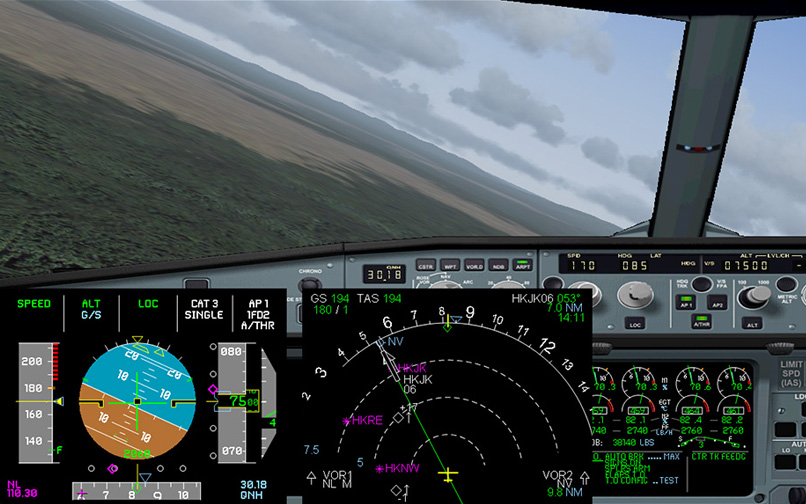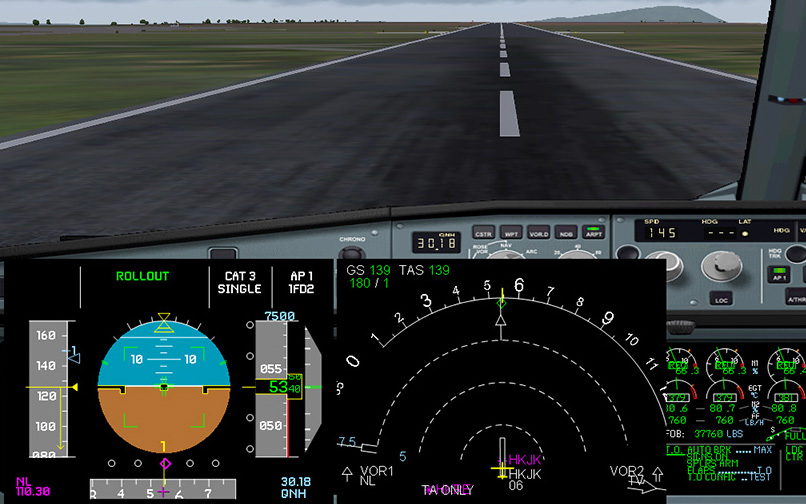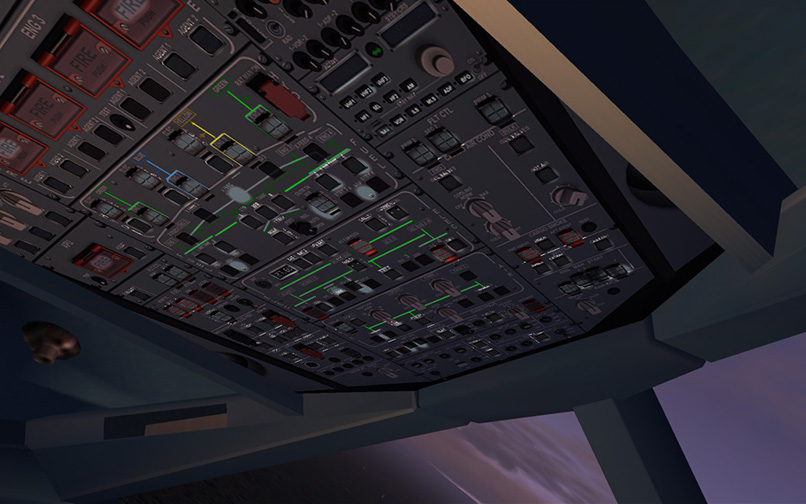PSS Airbus Pro Series A340-200
review
The Airbus A340 is a four-engined, long haul wide-body commercial passenger jet aircraft. Airbus launched the A340 in June 1987 in parallel with the A330, as a single aircraft program. Both aircraft share the same wing and similar fuselage structure, and borrow heavily from the advanced avionics and composite structure technology developed for the A320. The A340-300 first flew in 1991 and entered service with Lufthansa and Air France in March 1993. The A340 is a competitor of the McDonnell Douglas MD-11 and the Boeing 777. It seats between 261 and 380 passengers, and has a range between 6,700 and 9,000 NM. The CFM International CFM56-5C4 engines are the only engine choice for the -200 and -300 variants.
The -500 and -600 variants are powered by the Rolls-Royce Trent 500 engines. The A340-500 is the longest-range variant and can fly 313 passengers in a three-class cabin layout over 8,650 nm (16,020 km). The A340-600 is with a length of 75,30 meter almost 5 meter longer than the Boeing 747-400 and with that the longest passenger aircraft in the world. It was designed as an early generation 747 replacement. The A340-600 flies 380 passengers in a three-class cabin layout (419 in 2 class) over 7,500 nautical miles (13,900 km).
The PSS Airbus A340 Pro Series package contains the A340-200 and A340-300 and CFM engine sound. The base pack contains the Airbus rollout colors livery for each model, but an all liveries package can be bought which contains 33 liveries.
The PSS A340-200 is a good looking model and features all the usual animations. However, some of the animations are not quite right. The stabilizer is moving too high up or down when trimming, the landing gear is floating a bit and the wingtip vortices appear when the aircraft is still on the runway. Those vortices are only visible if there is a certain amount of humidity.
Like many other PSS models, the windows are physically 'holes' and not textures, so you can look right thru the aircraft (which is not a bad thing, although it might be a matter of taste). The base textures and most of the liveries are well done.
The 2d panel is very detailed, almost all cockpit systems are modeled, like TCAS, GPWS and a fully functional MCDU (Multi-Purpose Control and Display Unit). Even the auto land function works! Typical Airbus fly-by-wire systems like the Alpha Floor mode are also realistically modeled. The information on the EFIS displays is clear and sharp and you can expand the displays by clicking on them. On startup, the big panel (screenshot #2) will show, but with one click on a spot on the upper-left corner, a smaller version will show (screenshot #4), that way you'll be able to takeoff or land the aircraft. The overhead panel, pedestal and MCDU are also accessible by using click-spots located near the location of those panels.
The virtual cockpit looks nice too, almost all buttons and handles are clickable, including the MCDU. The spoilers, flaps and the throttles can not be moved by using the mouse, so you need to do that with the keyboard, joystick or in the 2d panel mode. Just like in the 2d panel mode, you can expand the EFIS displays by clicking on them. Unfortunately, the wings/engines are not modeled in the virtual cockpit, so in other words: no wingview.
The flight dynamics are ok, although the approach speed seems to be just a bit too slow for this type of aircraft. The auto flight system is working perfectly, however the turns made by the autopilot are too abrupt. The well illustrated manual (3 PDF files) is huge and explains all aircraft systems step-by-step. A panel configuration utility can be used to set the panel sound volume, default startup configuration (engines off or cold & dark) and key assignments. The load editor can be used to edit the payload and save it to the aircraft.cfg while the fuel planner can calculate how much fuel you need, but you'll have to manually enter the amount of fuel in FS.
--
the good
the bad
License |
: | Payware |
Price Indication |
: | $49.99 (�37.95) |
Panel |
: | Yes |
Virtual Cockpit |
: | Yes |
Wingview |
: | No |
Sound |
: | Yes |
Developed for |
: | FS2002 |
Compatibility |
: | FS2004 |
Wingflex |
: | No |
Landing gear |
: | Realistic, but floating |
Rudder effect |
: | Realistic |
FS2004 |
: |
|
FSX |
: |
|
Links
notes
Add a Comment




There are no comments for this aircraft